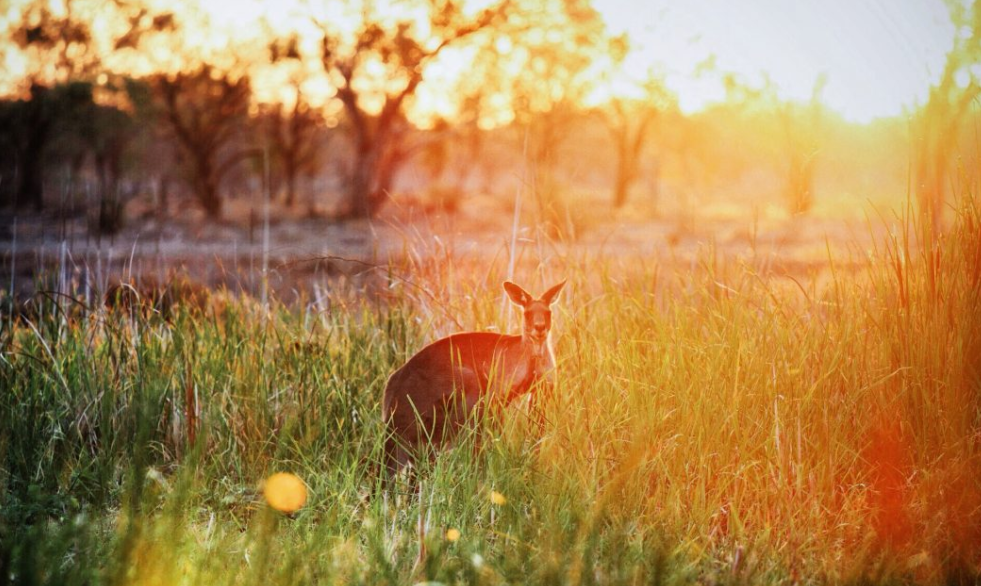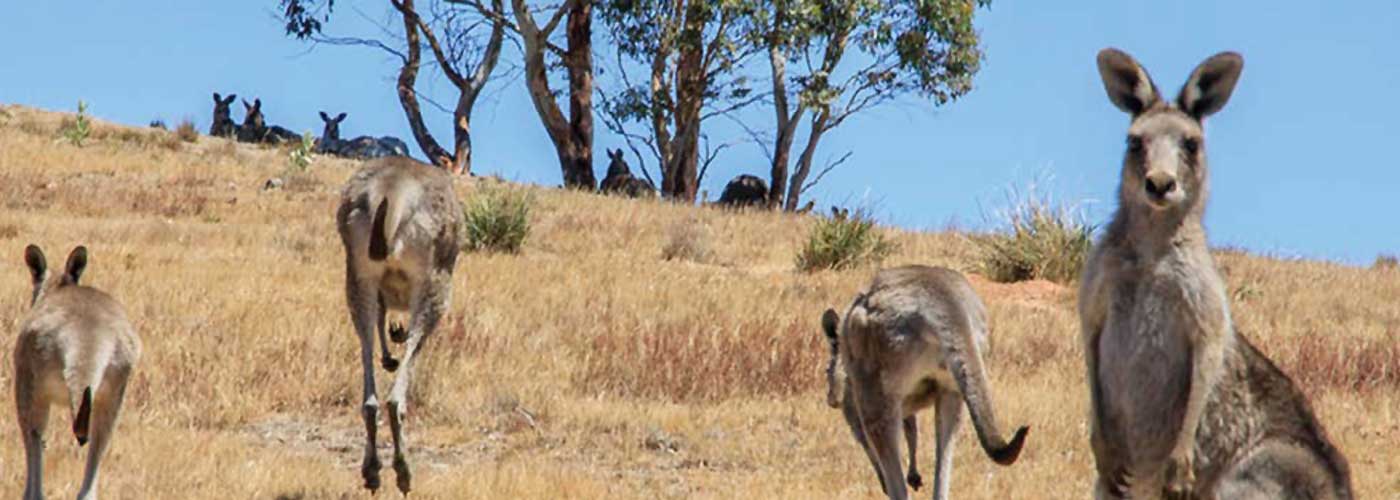Hopping into the kangaroo culling debate
Kristin Murdock
18 June 2023, 3:40 AM
 The red kangaroo population fell across the Western Plains during the drought and the Department of Planning and Environment are currently undertaking their annual survey to estimate current numbers.
The red kangaroo population fell across the Western Plains during the drought and the Department of Planning and Environment are currently undertaking their annual survey to estimate current numbers.If you've noticed light planes flying close to the ground lately, it could possibly be the Department of Planning and Environment undertaking their annual kangaroo count.
According to a media statement, "The aeroplane flies at 176km per hour, 300 feet above ground level. Two counters on each side of the plane count the kangaroos. Surveys are done in the first two to three hours and last two to three hours of daylight each day."
Nyngan, Bourke and Cobar saw light plane action in the first week of June with Brewarrina, Lightning Ridge, Narrabri, Coonabarabran transects also since being completed.
Next week, the south east districts, including Condobolin will be surveyed, followed by a week of catch up for any 20 kilometre x 50 kilometre block that has been missed.
Annual harvest quotas are established through this population monitoring and are allocated across 15 kangaroo management zones.
The commercial harvest of kangaroos in NSW is restricted to distinct zones and quotas limit the number of kangaroos of each species that may be harmed commercially.
Kangaroos have been commercially harvested in New South Wales for over 45 years and the practice has always provoked passionate debate from parties from both sides of the issue.
According to the NSW Government, the Commercial Kangaroo Management Program works to maintain ecologically sustainable populations of the commercially harvested kangaroo species and ensure that kangaroos are harvested humanely.

IMAGE: Kangaroo Management Taskforce
Animal advocacy group, Animals Australia is vehement in their opposition to the practice.
"The NSW Government is allowing even more kangaroos to suffer," the Animals Australia website states. "This year (2023), the NSW Government alone has given permission for almost two million kangaroos (1,850,228) to be killed and sold in the commercial industry. This ‘quota’ is even higher than 2022’s quota of 1,692,207 kangaroos – each one a sensitive, social individual."
The site goes on to day this "staggering number of 1.8M does not include joeys – the ‘invisible’ victims of this industry who, after their mothers have been shot, are legally decapitated or bludgeoned to death."
Local kangaroo harvesting professional Garry Trindall, has harvested kangaroos for a meat and hide processor in Walgett, and has been involved in the industry for around 50 years.
Mr Trindall told the ABC that concerns for joeys were misguided because most professional shooters only shot larger kangaroos.
"We try to cull what needs to be culled, that's the older and bigger kangaroos," he said. "Nine times out of 10, if we shoot those, they have joeys that are big enough to survive by themselves."

IMAGE: Kangaroo Management Taskforce
The Kangaroo Industry Association of Australia (KIAA) is the peak representative body for the commercial kangaroo industry, representing 90 per cent of kangaroo meat and skin processors across the country.
President of the KIAA, Ray Borda said that even if there was not a commercial kangaroo industry, conservation culling still needs to occur to manage the populations of certain species.
"A strictly regulated and ethical commercial industry has the ability to make use of kangaroos that would otherwise need to be discarded," he said. "A commercial industry ensures kangaroos are harvested humanely by licensed and qualified shooters, in sustainable numbers that are traced and recorded, and are used to create high-quality products that bring jobs and money into the economy."
Overall, numbers of red kangaroos across the Western Plains have dropped from 3,013,908 in 2010 to 2,924,368 in 2020.
The biggest reduction in population was seen around Narrabri where numbers dropped from 433,365 in 2010 to 190,468 in 2020.
Grey kangaroos also dropped in numbers in that decade, dipping from 3,159,044 to 3,118,439. The largest fall in population was seen in Cobar with a drastic reduction from 256,097 to 44,208.
Kangaroos and drought
Drought is as a factor in this population plummet. Industry sources stating the 'roo population dropped by more than a quarter during the drought that gripped the Western Plains late last decade.
KIAA say people need to heed the advice of ecologists.
"With the prospect of another drought in Australia in the coming years, ecologists are sounding the alarm on the urgent need to manage kangaroo populations across the country. After three consecutive years of La Niña weather patterns, which have provided ideal conditions for kangaroo growth, experts warn that the breeding cycle will accelerate significantly," KIAA states in their most recent newsletter.
Animals Australia are not interested. "No government or industry body is tracking how many kangaroos and joeys are harmed by shooters but manage to escape being killed quickly. It has been estimated that as many as 440,000 dependent young kangaroos in NSW and Queensland alone are either clubbed to death every year, or left to starve after their mothers are killed," they state on their website.
While the debate keeps simmering, kangaroo populations on the Western Plains will continue to be surveyed annually at this time of year.
WHAT'S ON




